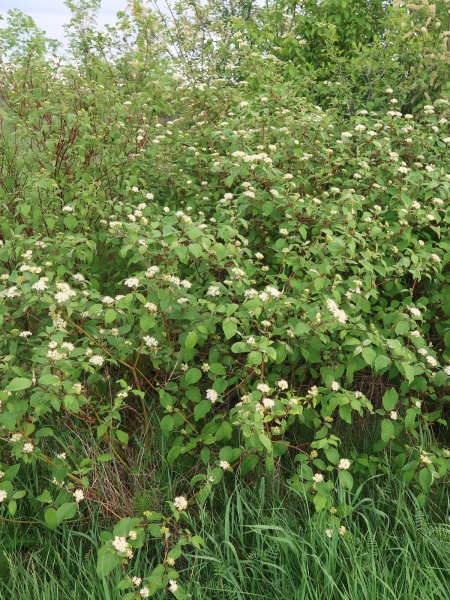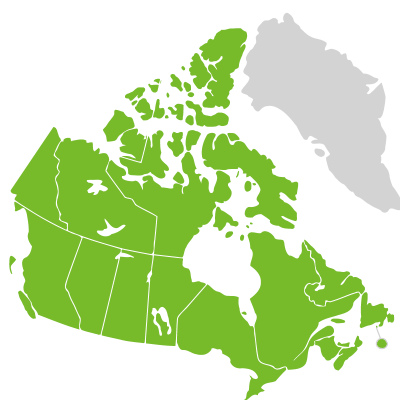
Source: OWSL
Cornus sericea
Red-osier Dogwood
Cornouiller hart-rouge
Synonyms
red-osier cornel
cornouiller stolonifère
hart rouge
No seeds available for this plant.
We currently accept seeds for this plant
Bloom Colour: White
Bloom Period: May - Jun
Max Height: 12.0 feet
Max Width: 10.0 feet (spreads by rhizome)
Light Condition:
 More than 6 hours of direct sun a day
More than 6 hours of direct sun a day
 More than 2 or 3 hours but less than 6 hours of direct sun a day
Soil conditions:
More than 2 or 3 hours but less than 6 hours of direct sun a day
Soil conditions:
 Tolerates medium soil condition
Tolerates medium soil condition
 More than 6 hours of direct sun a day
More than 6 hours of direct sun a day
 More than 2 or 3 hours but less than 6 hours of direct sun a day
More than 2 or 3 hours but less than 6 hours of direct sun a day
 Tolerates medium soil condition
Tolerates medium soil condition
Lifespan:
Perennial
plants that will that come back year after year
Gardener Experience:
 Easy to germinate
Easy to germinate
 Self-seeding
Self-seeding
 Easy to germinate
Easy to germinate
 Self-seeding
Self-seeding
Landscape Uses:
 Suitable for wetland garden
Suitable for wetland garden
 Suitable for rain gardens
Suitable for rain gardens
 Suitable for school gardens
Suitable for school gardens
 Can be used as a hedge
Can be used as a hedge
 Suitable for wetland garden
Suitable for wetland garden
 Suitable for rain gardens
Suitable for rain gardens
 Suitable for school gardens
Suitable for school gardens
 Can be used as a hedge
Can be used as a hedge
Ecological Benefits:
 Supports pollinators
Supports pollinators
 Butterfly host
Butterfly host
 Bee host
Bee host
 Keystone species
Keystone species
 Supports pollinators
Supports pollinators
 Butterfly host
Butterfly host
 Bee host
Bee host
 Keystone species
Keystone species
Tolerates:
 Deer resistant
Deer resistant
 Rabbit resistant
Rabbit resistant
 Tolerates foot traffic around the plant
Tolerates foot traffic around the plant
 Tolerates limestone conditions
Tolerates limestone conditions
 Tolerates acidic soil conditions
Tolerates acidic soil conditions
 Tolerates juglone conditions
Tolerates juglone conditions
 Tolerates transplantation
Tolerates transplantation
 Deer resistant
Deer resistant
 Rabbit resistant
Rabbit resistant
 Tolerates foot traffic around the plant
Tolerates foot traffic around the plant
 Tolerates limestone conditions
Tolerates limestone conditions
 Tolerates acidic soil conditions
Tolerates acidic soil conditions
 Tolerates juglone conditions
Tolerates juglone conditions
 Tolerates transplantation
Tolerates transplantation
Special Features and Considerations:
Plant Location
Native to Ottawa region: Yes
Distribution according to VASCAN

Ephemeral
Native
Introduced
Excluded
Extirpated
Doubtful
Absent
Thrives in Ecozones
- Taiga Plains
- Atlantic Maritime
- Montane Cordillera
- Hudson Plains
- Boreal Shield
- Mixed Wood Plains
Ecological Benefits
Butterflies Supported by Cornus sericea
- Celastrina ladon (Spring Azure)
- Hyalophora cecropia (Cecropia moth)
- Malacosoma americanum (Eastern Tent Caterpillar)
Specialized Bees Supported by Cornus sericea
- Andrena fragilis
- Andrena integra
- Andrena persimulata
Plants that grow in similar conditions, that bloom at the same time.
Complementary Plants
- No complementary plants found.
Substitute For Non-Native Plants
- Rhamnus cathartica (Common Buckthorn)
- Rhamnus frangula (Glossy Buckthorn)
- Euonymus alatus (Burning Bush)
- Elaeagnus angustifolia (Russian Olive)
- Elaeagnus umbellata (Autumn Olive)
Sowing Information
Download Seed Envelope Labels (PDF)
- Sowing depth: Sow just below surface
- Sow by January
- Stratification duration: 90 days
- Self-seeding
- Notes: Best planted outdoors in fall.
Harvesting and Seed Sharing
- Harvest start month: August
- Harvesting indicator:
- Berries are ripen and easily fall off or have fallen off
- Harvesting:
- Squeeze berries to extract seeds, wash with soapy water, rinse throroughly
- Seed viability test:
- No test needed before donating
- Packaging measure: Six (6) seeds (eyeball)
- Seed storage:
- Air dry in paper bag or open container, for a few days until crisp
- Shake seeds to move them once in a while to prevent molding
- Cultivar: Yes, do not donate unless you know source, and there are no known cultivars in your garden or at proximity
- Remove non-seed material
- No harvesting video available at this time.
Toxicity Notes
Inadequate information on toxicity found.


 Canadensis
Canadensis
